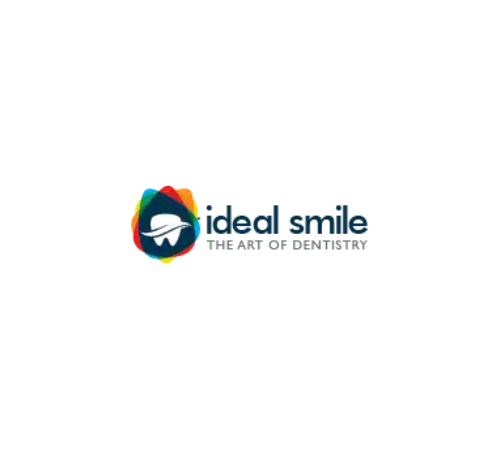Crooked teeth, overcrowding, or bite issues can significantly affect your confidence and oral health. That’s where teeth braces come in. Braces are one of the most effective and popular orthodontic solutions available today. Whether you’re considering them for yourself or a child, understanding how braces work, the types available, and what to expect can make
Crooked teeth, overcrowding, or bite issues can significantly affect your confidence and oral health. That’s where teeth braces come in. Braces are one of the most effective and popular orthodontic solutions available today. Whether you’re considering them for yourself or a child, understanding how braces work, the types available, and what to expect can make the journey smoother.
In this comprehensive guide, we’ll walk you through everything you need to know about braces, including their benefits, types, treatment process, costs, and aftercare.
What Are Teeth Braces?
Teeth braces are orthodontic devices used to align and straighten teeth, improve dental health, and correct bite issues like overbite, underbite, crossbite, and open bite. Braces apply continuous pressure on teeth over time, gradually moving them into the desired position.
Orthodontic braces can also help prevent long-term dental issues such as tooth decay, gum disease, jaw pain, and speech difficulties.
Common Reasons for Getting Braces
People seek orthodontic treatment for a variety of reasons. The most common include:
-
Crooked or crowded teeth
-
Gaps between teeth
-
Overbite or underbite
-
Crossbite or open bite
-
Jaw misalignment
-
Speech or chewing difficulties
Early intervention can prevent these issues from becoming more severe. Orthodontists often recommend evaluation by age 7, although braces are effective at almost any age.
Types of Braces
Modern orthodontics offers several types of braces to suit different needs, preferences, and budgets. Here are the most popular options:
1. Traditional Metal Braces
Metal braces are the most common and cost-effective type. They consist of metal brackets attached to each tooth and connected with a wire. Modern metal braces are smaller, more comfortable, and less noticeable than they used to be.
🟢 Pros: Highly effective, affordable
🔴 Cons: Most visible option
2. Ceramic Braces
Ceramic braces work like metal braces but use tooth-colored or clear brackets that blend in with your teeth. They’re less noticeable and preferred by people concerned about aesthetics.
🟢 Pros: Less noticeable than metal
🔴 Cons: More expensive, prone to staining
3. Lingual Braces
Lingual braces are attached to the back (lingual side) of the teeth, making them invisible from the front. However, they can be more uncomfortable and harder to clean.
🟢 Pros: Hidden behind teeth
🔴 Cons: Expensive, difficult to clean, may affect speech
4. Clear Aligners (e.g., Invisalign)
Clear aligners are removable plastic trays that gradually move teeth. They are popular among teens and adults due to their near-invisibility and convenience.
🟢 Pros: Removable, discreet
🔴 Cons: Costly, requires discipline to wear 20–22 hours daily
The Braces Treatment Process
Here’s a step-by-step breakdown of what to expect when getting braces:
1. Initial Consultation
Your journey begins with a visit to an orthodontist, who examines your teeth, takes X-rays and impressions, and discusses your goals. A personalized treatment plan is created.
2. Application
During the next appointment, the orthodontist bonds brackets to your teeth using special adhesive and connects them with wires and elastic bands.
3. Regular Adjustments
You’ll visit the orthodontist every 4 to 6 weeks for adjustments. These appointments ensure your teeth are moving according to plan. Wires may be tightened or replaced.
4. Duration of Treatment
Most people wear braces for 12 to 36 months, depending on the complexity of the case. Your orthodontist will give an estimated timeline.
5. Retainers
After braces are removed, you’ll need to wear a retainer to keep your teeth in their new positions. Retainers can be removable or fixed.
Braces Care and Maintenance
Good oral hygiene is essential while wearing braces. Food particles can get trapped, increasing the risk of plaque and cavities. Follow these tips for optimal care:
-
Brush after every meal using a soft-bristled brush and fluoride toothpaste
-
Floss daily with a floss threader or orthodontic flosser
-
Use an interdental brush or water flosser to clean around brackets
-
Avoid sticky, hard, or crunchy foods that can damage brackets and wires
-
Visit your orthodontist and dentist regularly
Costs of Braces
The cost of braces varies depending on the type, duration of treatment, and geographic location. On average:
-
Metal braces: $3,000–$7,000
-
Ceramic braces: $4,000–$8,000
-
Lingual braces: $8,000–$10,000+
-
Clear aligners: $3,000–$7,500
Many dental insurance plans offer partial coverage for orthodontic treatment. Flexible payment plans may also be available.
Braces for Children vs. Adults
While braces are commonly associated with teenagers, they are suitable for both children and adults.
-
Children (Ages 7–14): Treatment is often more effective due to developing jawbones. Early intervention can prevent future complications.
-
Teens: The most common age group for braces, with high success rates and peer support.
-
Adults: Increasingly popular due to discreet options like clear aligners and ceramic braces. Treatment may take longer in adults due to bone density.
Benefits of Braces
Braces offer both cosmetic and health advantages:
-
Improved smile and confidence
-
Better bite and chewing function
-
Reduced risk of cavities and gum disease
-
Prevention of jaw pain and temporomandibular joint (TMJ) disorders
-
Enhanced speech and pronunciation
Potential Discomforts and Side Effects
While braces are safe, some discomfort is normal:
-
Soreness after adjustments
-
Irritation from brackets or wires
-
Difficulty eating certain foods
-
Speech changes (temporary)
Orthodontic wax, over-the-counter pain relievers, and soft foods can help manage discomfort.
Myths and Facts About Braces
Let’s debunk some common myths:
-
❌ Myth: Braces are only for kids
✅ Fact: Braces are effective at any age -
❌ Myth: Braces are extremely painful
✅ Fact: There’s some discomfort, but it’s manageable -
❌ Myth: Metal braces set off airport detectors
✅ Fact: They don’t -
❌ Myth: You can’t play sports or instruments with braces
✅ Fact: You can, with minor adjustments
Final Thoughts
Teeth braces can be life-changing, offering not only a beautiful smile but also long-term dental health benefits. With a range of options available, there’s a solution for every age, lifestyle, and budget. If you’re considering braces, consult with a qualified orthodontist to explore the best treatment plan for your needs.
















